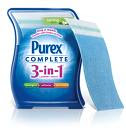The toymaker Mattel is facing dwindling sales in the U.S., as little girls no longer aspire to look like Barbie, an embodiment of perfection that no longer fits our national consciousness. The edgier and less perfect
Bratz dolls have become a popular alternative, and they've taken away Barbie's spotlight.

But Barbie has decided not to roll over and rely on beating Bratz in court. On Barbie's 50 birthday, Mattel opened up a $30 million, six-story Barbie lifestyle store in Shanghai--complete with a spa where mothers can get their nails done with their daughters, a café and bar and racks of Barbie clothing. Additionally, Barbie has developed her own cosmetics line labeled Plastic Smooth.


Not only is Barbie moving into a new region where girls don't really know who she is, but Mattel is expanding its core market to include not only little girls but also club-age young women. Rather than rely wholly on children or mothers who grew up playing with the dolls, Mattel is also targeting twenty-somethings by offering a line of clothing by Patricia Fields, the Sex and the City designer.

For younger girls, the store offers a catwalk on which they can model Barbie-esque clothes and assistants to teach them how to sing and dance to the Barbie Girl song.
The man who has spearheaded the project for Mattel, Richard Dickson, says his favourite feature is the Pink Tunnel, a neon-lit escalator that hums with the recorded sound of giggling girls.
The store boasts a cafe and a bar called the Pink Room, complete with karaoke, a DJ and pink martinis. "Barbies want to talk to Kens — you have to have a place for that," says food manager Hayes Zhou.
For older women, Mattel has commissioned New York-based fashion designer Vera Wang to come up with a $A22,000 wedding dress. This is not the first time we have seen women gravitate towards childhood favorite characters for weddings. Disney launched their Princess wedding dress collection a few years ago with dresses modeled after gowns worn by Disney Princess such as Aurora, Cinderella, Snow White and Ariel.

The idea: Barbie is no longer just a doll. She's a lifestyle. That may be harder for Americans to accept since our image of her is so firmly ingrained. In China, she is a newcomer unburdened by generations of familiarity, and Mattel has a chance to create a new consumer perception of what she means.

The Barbie Store idea is a combination of American Girl PlaceClub Libby Lu. Instead of tea parties you get facials, and Hannah Montana is replaced by Barbie. Although these two stores tend to appeal more to the pre-teen/tween age groups and Barbie Store is targeting 20 somethings as well with their spa, cocktails and fashion.

It remains to be seen whether Chinese consumers will warm to the idea and whether Barbie can fit in there. What kind of food does Barbie eat in her cafe? What kind of food would she eat in China? But Mattel should be given credit for innovating and taking a calculated risk in a down market.

Portions taken from Shaun Rein


















